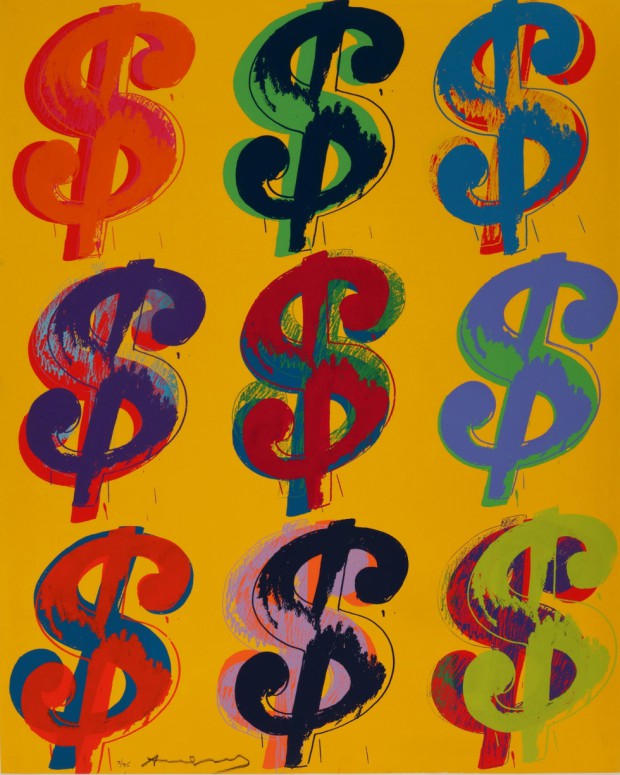Investing in art isn’t always a safe bet, but collectors do it anyway. Artists, on the other hand, rarely see the rewards of these sales. That’s where the Artist Pension Trust comes in. The Brooklyn corporation seeks to become what The Art Market Monitor calls “a cross between an art fund and a 401(k) for artists”. For 10 years, the Trust has been soliciting artists to join and donate—or “invest”, the words of the Trust—work, and now, the trust’s initial plans are finally coming to fruition. This fall, they will begin the sale of 5,000 artworks to begin building a pool of money that will go towards paying its participating artists.
Here’s how it works: artists will receive a cut of whatever work they sell over the span of several decades in hopes that the revenue will generate retirement savings and tax benefits. 40 per cent goes the artist, 32 per cent into the general pool, which includes artists from one trust out of the nine APT has created. The rest pays the administrative costs of running the program.
We see some real benefits to the trust, which seeks to help artists build a nest egg, but there’s some potential downsides, too. For artists, the pro to joining is that it’ll help those people save up for the future. According to The New York Times, a lot of us will need the help. The Times’ Teresa Ghilarducci recently crunched some retirement numbers and came up with some shocking figures; she found that counting what Americans have currently saved up, almost half of the middle-class will need to survive off a food budget of about $5 a day. That includes those with pensions, social security, and the like. Without those advantages, artists fare worse. (Except for those in Finland. That country has been awarding pensions to artists since the 1830s.)
Of course, there isn’t anything to lose from joining. From what we can tell, signing up with the pension doesn’t set back its artist members. All they need to do is donate/invest their own work, up to 20 works over 20 years, which, according to the Artist Pension Trust must have a minimum market value of $5,000 (set by the trust or by the artists’ galleries). For artists who’re just starting out, or for those without gallery representation, there’s additional benefits: the trust covers all costs of insurance and storage, at an annual cost of approximately $525,000.
There might be several downsides to the Artist Pension Trust’s program; mostly, the safety net isn’t as sturdy as we’re led to believe. The Artist Pension Trust is open to all artists, including those straight out of MFA programs, and anyone can apply on their website (although less than 5 percent are accepted, with the rest of the artists having been nominated by the Trust’s curators). Betting on artists who haven’t yet had time to mature or develop a practice might be a risky investment for other artists to make. Then, the trust, which distributes the pension over a period of 30-40 years, becomes more beneficial only to younger artists; if you’re nearing retirement age right now, the pension can’t kick in any quicker.
The real risk to joining the Artist Pension Trust lies with betting on the art market, which is by no means stable or predictable. The Artists Pension Trust values their current collection of over 10,000 works at more than 100 million dollars. The Telegraph calls this the “largest contemporary art collection in the world”, but we’re more doubtful of this claim. On average, each work in the trust would need to be valued at 10,000 dollars, though we’re not sure how true this might be given that many of the artists included in the trust are just starting out.
Those mid-career artists we do recognize, Clifford Owens, for one, has donated/invested small c-prints (a 2011 C-print by Owens is being sold on Artsy for 6,000 dollars). Alec Soth, another mid-career artist, has similarly gifted the trust with similar work, though his work might be worth more: the highest hammer price achieved for a Soth at auction was 30,000 dollars.
But what happens when the Artists Pension Trust sells the work of artist members this fall? If Owens’ work, for instance, does sell for $10,000, the artist would receive a $4,000 cut immediately, with the remaining money distributed between the Artist Pension Fund and the hundreds of member artists. Among those members, each would receive a cut of the $3,200, spread out over several decades. Projections for those artists investing in the trust have not been made available.
Still, we’re wary of just how much artists can gain from this project. It’d be great for artists, and others who’re similarly independently employed, to cruise into retirement. The Artist Pension Trust takes one step in that direction, but as far as we can tell, the gains appear minimal, and are based around speculation that the art market will continue zipping onward and upward.
Updates: Friday, July 26, 2013 — The piece has been updated to reflect that artists “invest” rather than donate work; artists who donate work are paid immediately; and that the pool of artists who receive a pension from any single work is split among 250 artists, and not the entire number of artists participating in the pool.



{ 3 comments }
I’ll just plan to never retire from making art.
There’s a certain point though where it might become difficult to art as much due to health reasons, or to support a studio practice with outside earned income.
Safe Investments – Deposited $400 and Received $800 daily for 7 days
Invest Herer
http://www.safeinvestments.org.uk
Comments on this entry are closed.